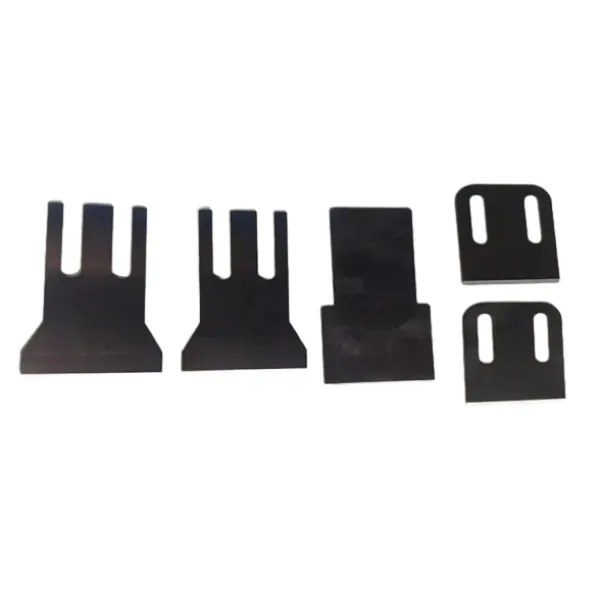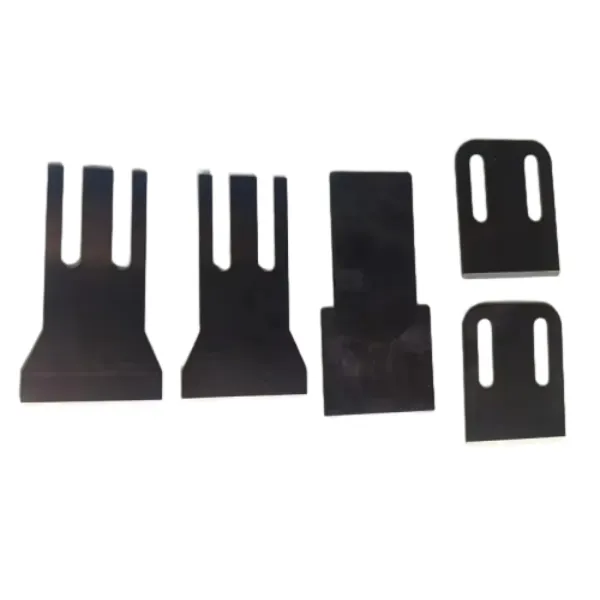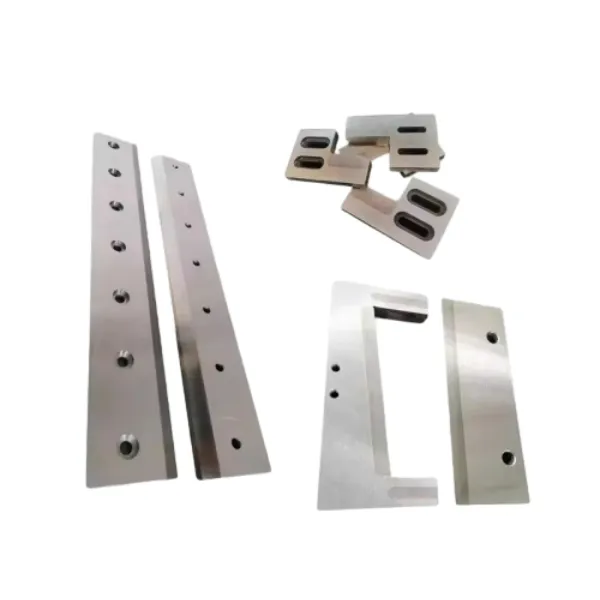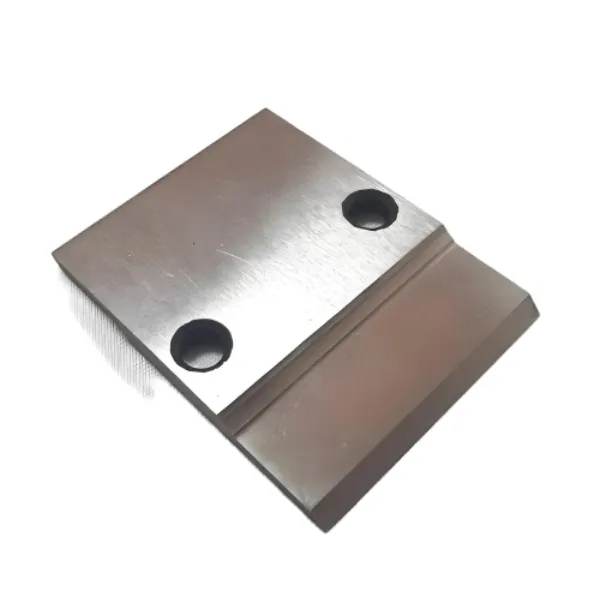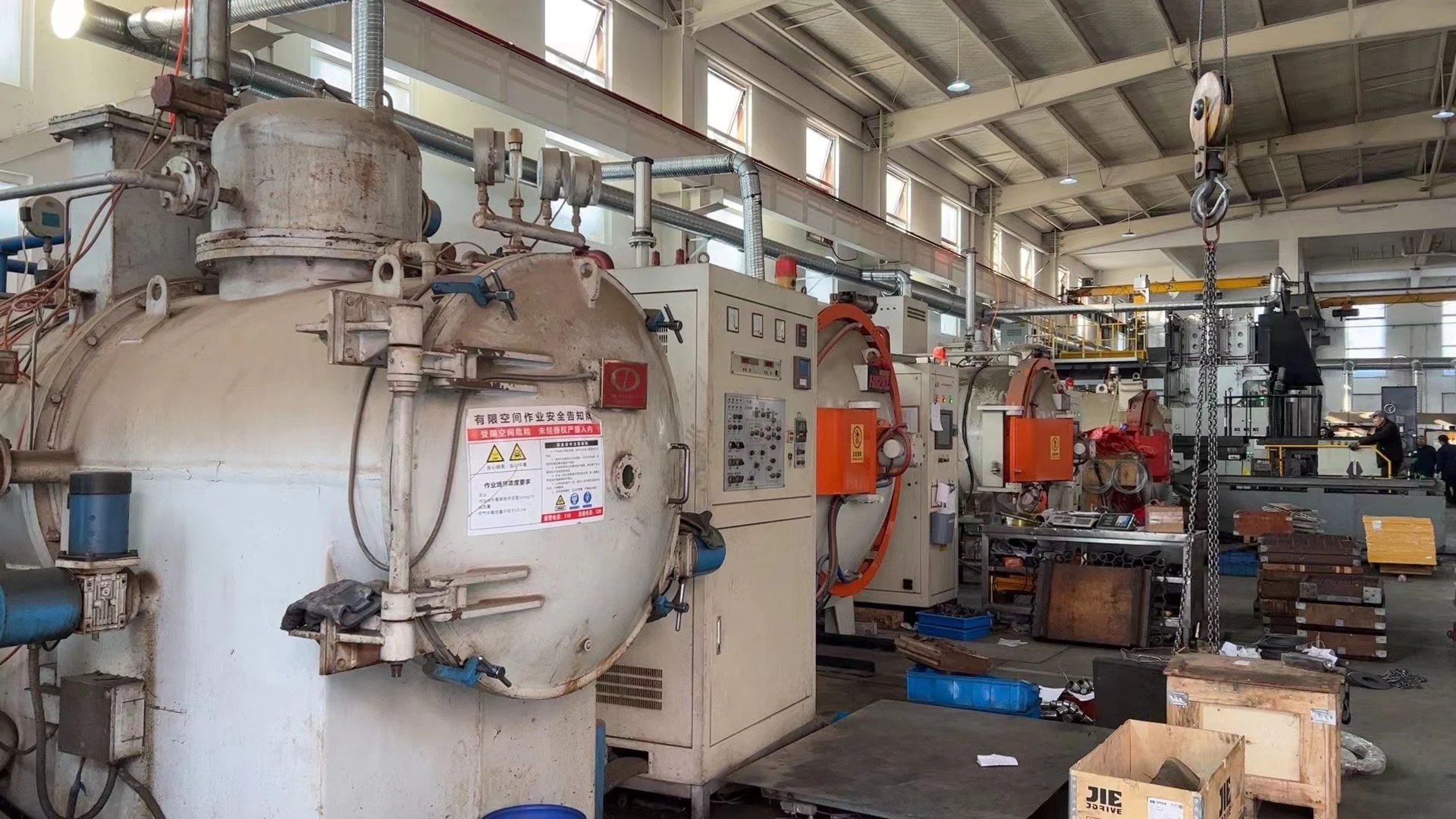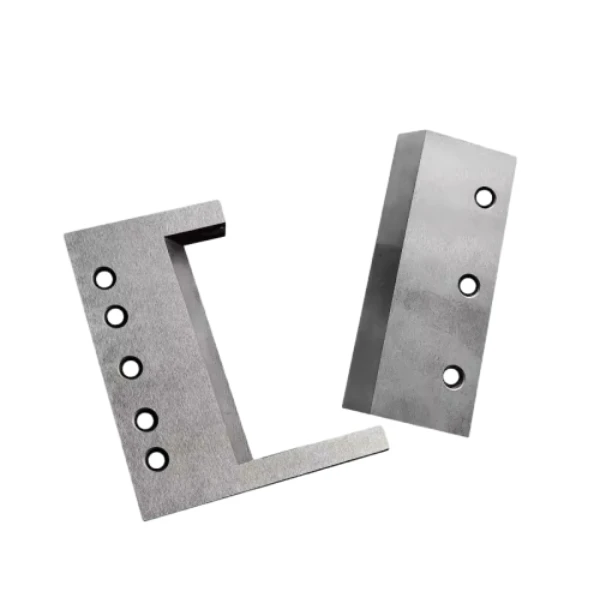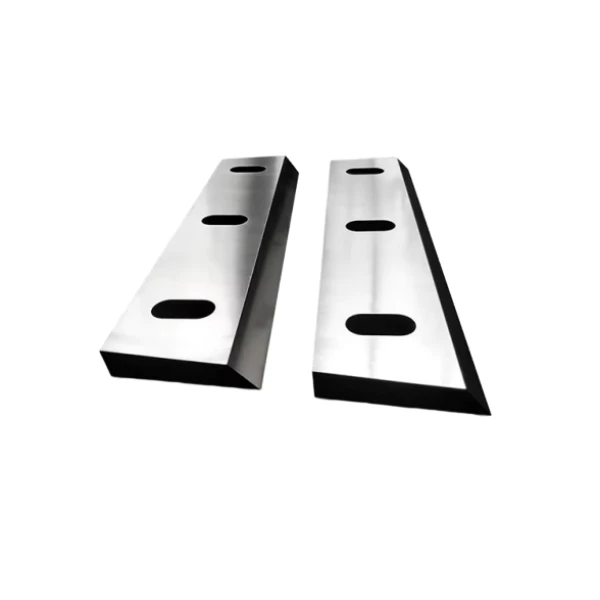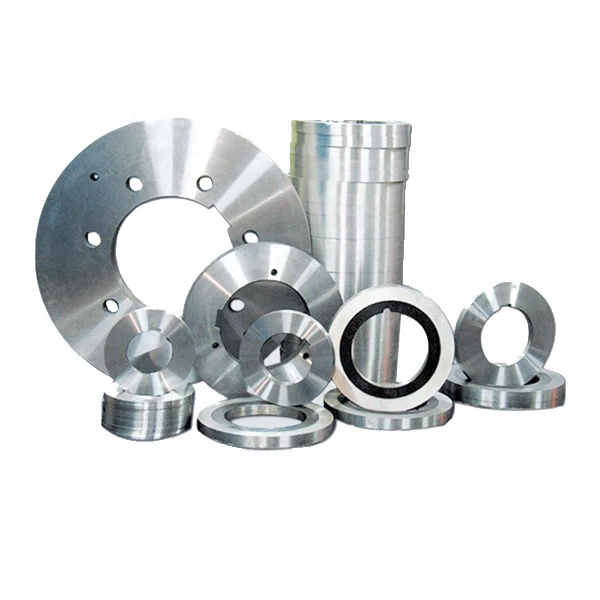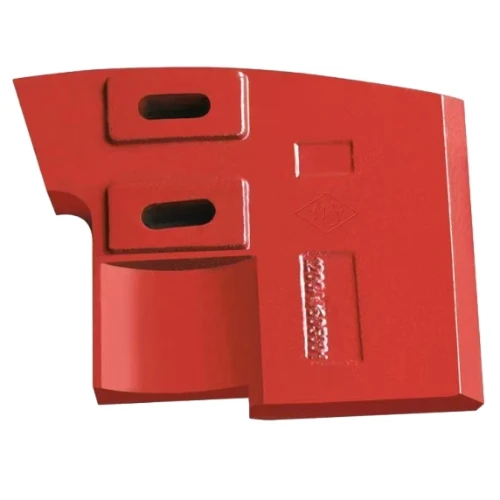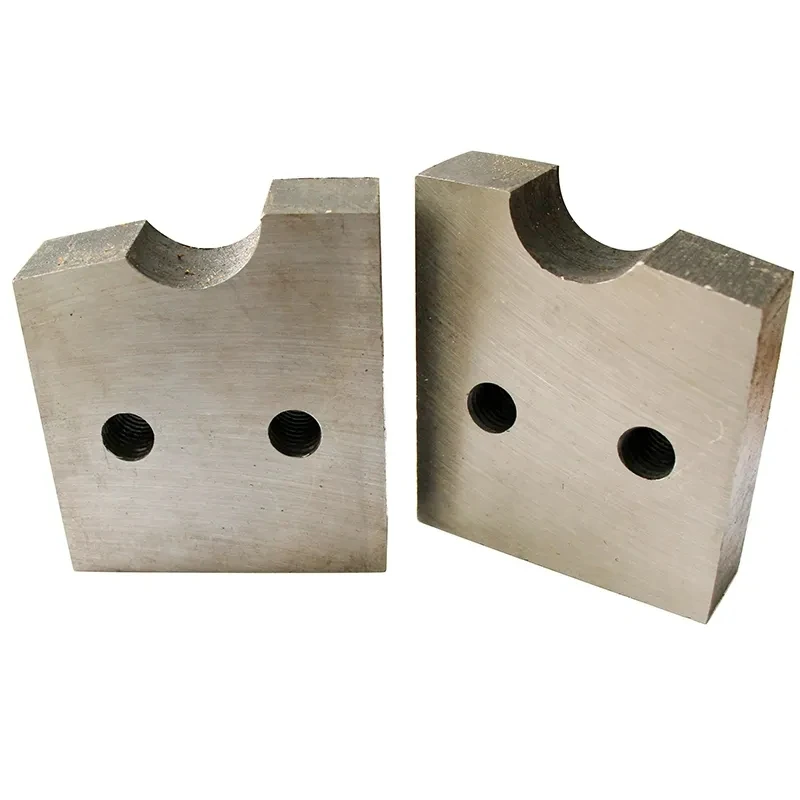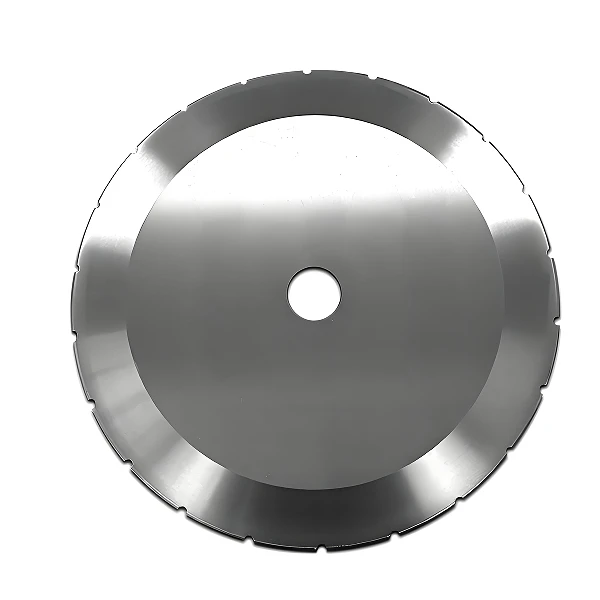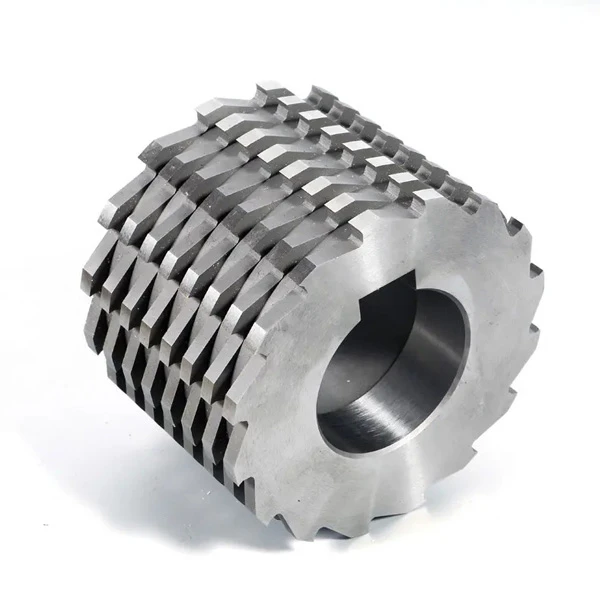- Tel: +86 15003285235
- Email: lena@industrialblades.cc
- Afrikaans
- Albanian
- Amharic
- Arabic
- Armenian
- Azerbaijani
- Basque
- Belarusian
- Bengali
- Bosnian
- Bulgarian
- Catalan
- Cebuano
- Corsican
- Croatian
- Czech
- Danish
- Dutch
- English
- Esperanto
- Estonian
- Finnish
- French
- Frisian
- Galician
- Georgian
- German
- Greek
- Gujarati
- Haitian Creole
- hausa
- hawaiian
- Hebrew
- Hindi
- Miao
- Hungarian
- Icelandic
- igbo
- Indonesian
- irish
- Italian
- Japanese
- Javanese
- Kannada
- kazakh
- Khmer
- Rwandese
- Korean
- Kurdish
- Kyrgyz
- Lao
- Latin
- Latvian
- Lithuanian
- Luxembourgish
- Macedonian
- Malgashi
- Malay
- Malayalam
- Maltese
- Maori
- Marathi
- Mongolian
- Myanmar
- Nepali
- Norwegian
Plastic Granulator Blade
1.General plastics such as polyethylene (PE), polypropylene (PP), polyvinyl chloride (PVC), etc. require continuous granulation through rolling cutters or flat knives, with high requirements for particle uniformity.
2.Engineering plastics such as ABS, polycarbonate (PC), nylon (PA), etc., due to their high hardness, require the use of combination blades or alloy embedded blades to improve cutting accuracy and wear resistance.
3.High temperature materials: such as polyetheretherketone (PEEK) or hot melt adhesive, require blade materials suitable for high temperature conditions (such as hard alloys) and cooling systems.
4.Recycling material processing: For waste plastics containing impurities (such as films and pipes), they need to be pre crushed by a strong crusher blade before granulation.
5.Dry cutting: Suitable for materials such as polyvinyl chloride (PVC) that require rapid prototyping. The blade can directly cut and extrude strip materials without the need for water cooling.
6.Wet cutting: Used in conjunction with a cooling water system for high-temperature or viscous materials (such as rubber and hot melt adhesive) to reduce knife sticking.
7.Packaging industry: When producing plastic packaging particles (such as PE film raw materials), it is required that the particle size be uniform and the surface be smooth.
8.Electronic appliances: Precision plastic parts (such as phone cases and connectors) require high-purity particles and use combination blades to reduce dust pollution.
9.Automotive parts: For granulation of engineering plastics (such as PA66), wear-resistant blades are required to ensure long-term stability.
10.Medical industry: Medical grade plastics (such as PP and PE) require clean and pollution-free particles, and require specialized blades and rust prevention treatment.
PE/PP film recycling granulation: Continuous granulation of waste film is carried out using flat knives or rolling cutters, with particle diameters controlled between 3-5mm, for the production of recycled packaging materials.
ABS electronic waste re granulation: A combined blade (main blade+auxiliary blade) is used for secondary precision cutting of the crushed ABS shell, with a particle accuracy of ± 0.2mm, meeting the raw material requirements for injection molded parts.
PVC pipe dry cutting granulation: using a rolling blade to directly cut extruded material strips, the particle length can be adjusted to 2-4mm, suitable for the production of plastic products for construction.
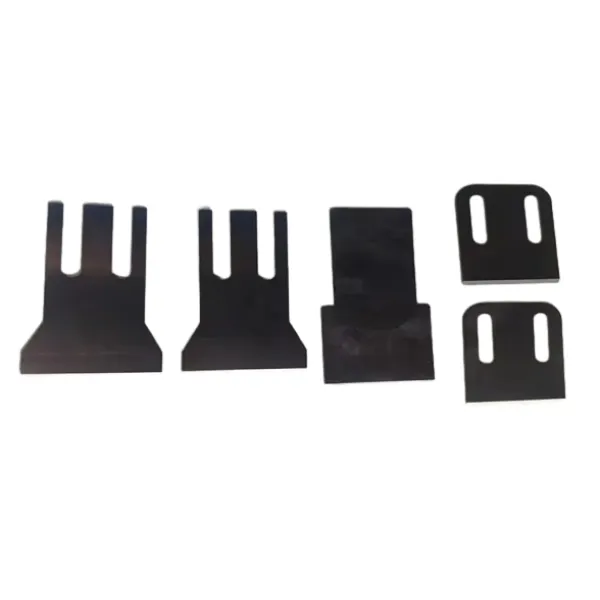
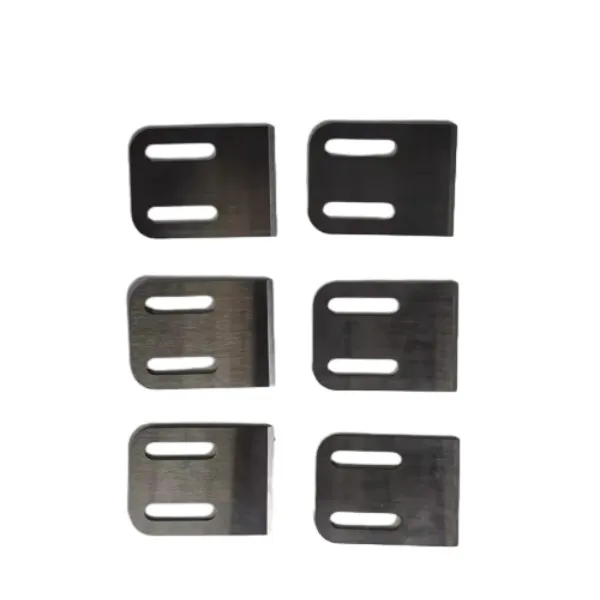
|
Blade Shape |
Structural Characteristics |
Application Scenarios |
Advantage |
|
Hob shaped blade |
The blade body is cylindrical or disc-shaped, with spiral or straight cutting edges distributed on the surface, and plastic particles are formed through rolling extrusion. |
Suitable for single/twin-screw granulators, capable of handling continuous cutting needs of thermoplastic plastics such as PE and PP |
Rolling cutting reduces material sticking and improves particle uniformity, making it suitable for large-scale granulation production. |
|
Alien blade |
The blade is designed as a non-standard irregular shape (such as square, trapezoidal, wavy), suitable for different particle shape requirements. |
For special plastic products (such as plastic pipes, shaped parts) or customized particle specifications (such as square particles). |
By controlling the geometric shape of particles with irregular blades, downstream processing requirements are met. |
|
Long strip blade |
The blade is in a straight and elongated shape, with a relatively thin thickness, and is often used for hot cutting or cold cutting granulation processes. |
Suitable for fine granulation of thin-walled materials such as plastic films and sheets, with adjustable particle size. |
Low cutting resistance, low energy consumption, and minimal dust generation. |
|
Combination blade |
Composed of a combination of main and auxiliary knives, the main knife is responsible for rough cutting, while the auxiliary knife performs fine cutting or trimming. |
Used for high-precision granulation scenarios (such as plastic shell recycling of electronic components), achieving synchronous completion of multi-stage crushing and granulation. |
Improve granulation efficiency and reduce secondary processing steps. |
|
Inlaid alloy blade |
The blade is partially embedded with hard alloy (such as tungsten steel), and the blade and blade body adopt a separate design. |
Extend the service life of blades for high hardness materials such as glass fiber reinforced plastics and engineering plastics |
The alloy part can be replaced separately to reduce maintenance costs. |
|
Conventional plastic granulation (such as PE/PP pellets): |
Prioritize using rolling cutters or elongated blades. |
|
Special particle morphology requirements: |
Choose between irregular blades or combination blades. |
|
High hardness/high wear materials: |
Recommend alloy edged blades. |
|
Fine granulation of thin-walled materials: |
Long strip blades are better. |
By adapting the blade shape and granulation process, the particle quality can be significantly improved and energy consumption can be reduced.

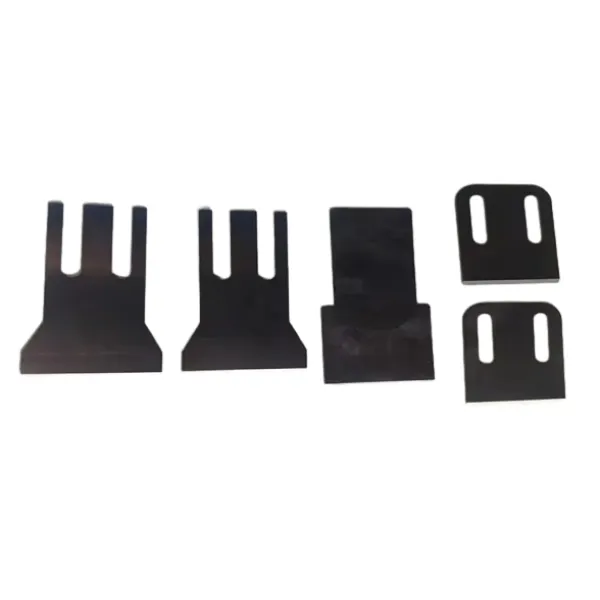
|
type |
Characteristics |
typical products |
|
Spiral rolling cutter |
Made of hard alloy or high-speed steel material, suitable for single/twin-screw granulators, with high cutting efficiency (20-30kg/h), suitable for general plastic granulation such as ABS and PE. |
Support continuous operation of underwater pellet cutting and high-temperature plastic |
|
Pineapple Claw Blade |
Multi claw interlocking design, strong wear resistance, suitable for high viscosity plastics such as recycled PVC and nylon, reducing material adhesion |
Cutting thickness 0.5-3mm |
|
Material |
Hardness(HRC) |
Wear resistance |
Applicable Scenarios |
|
High speed steel (HSS) |
55-58 |
medium |
Intermittent operation of general plastics (PE, PP) |
|
hard metal |
65-70 |
tall |
Continuous granulation (including fiberglass/metal impurities) |
|
SKD11 alloy steel |
60-62 |
tall |
High load recycled plastics (such as PVC, PET) |
1.Daily maintenance
Cleaning: Use a high-pressure air gun to clean the plastic residue on the surface of the blade every shift to prevent adhesion and affect cutting accuracy.
Lubrication: Add lithium based grease to bearings and gears every 50 hours to reduce the risk of wear.
2.Replacement cycle
High speed steel blade: 150-300 hours (depending on plastic hardness);
Hard alloy blade: 800-1200 hours (avoid mixing metal impurities).
Plastic granulator blades need to be selected comprehensively based on the type of plastic (universal plastic/high viscosity recycled material), operating intensity (intermittent/continuous), and cost budget.
Plastic Granulator Knives for Recycling Operations
Our plastic granulator knives are designed for efficient size reduction in plastic recycling and reprocessing. Featuring wear-resistant carbide tips and advanced alloy compositions, these industrial-grade knives withstand the abrasive nature of filled and reinforced plastics. The precision-ground cutting edges ensure consistent particle size output while reducing power requirements. Trusted by plastic processors worldwide, our granulator knives deliver extended service life and reliable performance in both central and beside-the-press granulation systems.
Get Binsheng Blade Tech Tips
ISO 9001 insights: industry trends & blade guides

